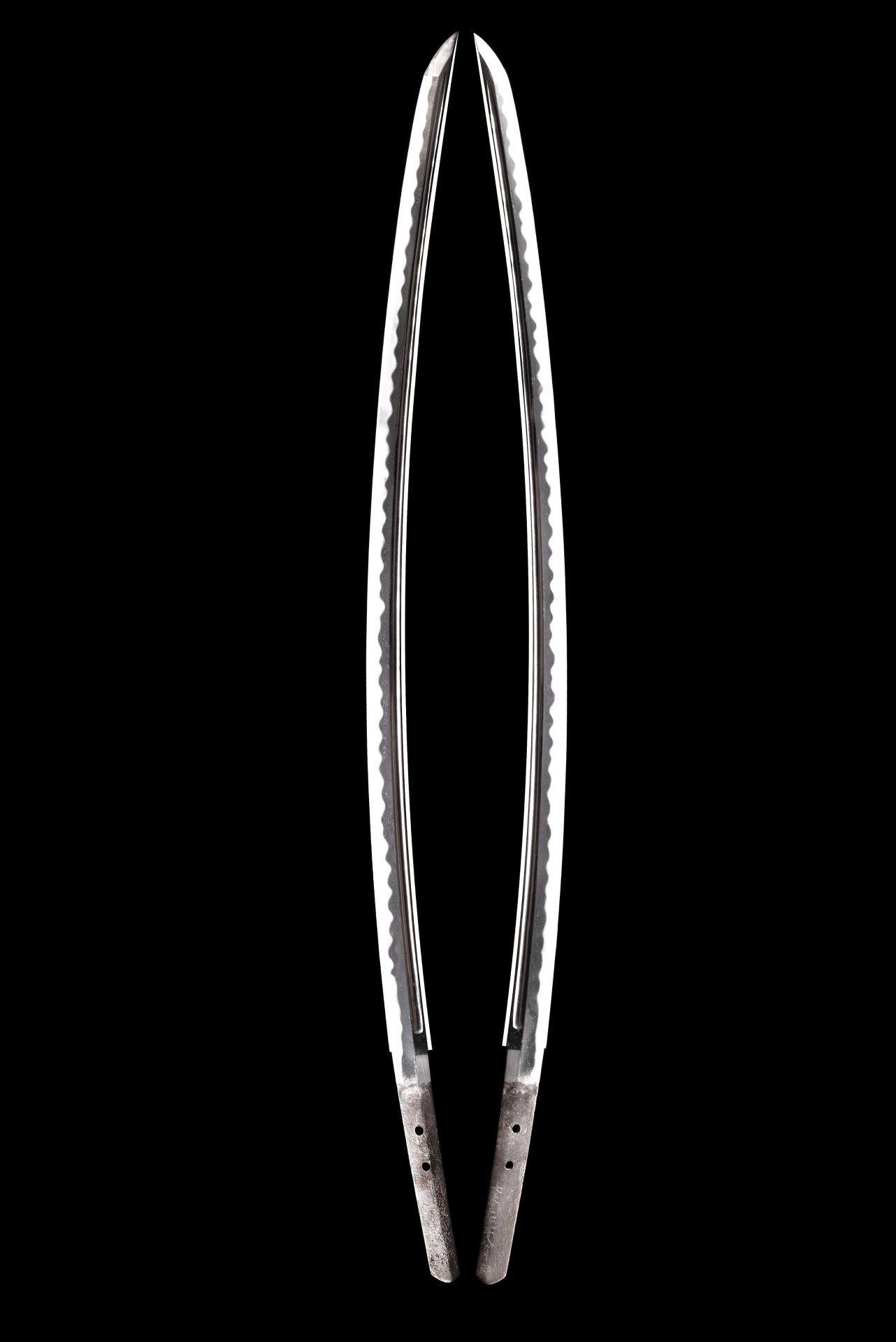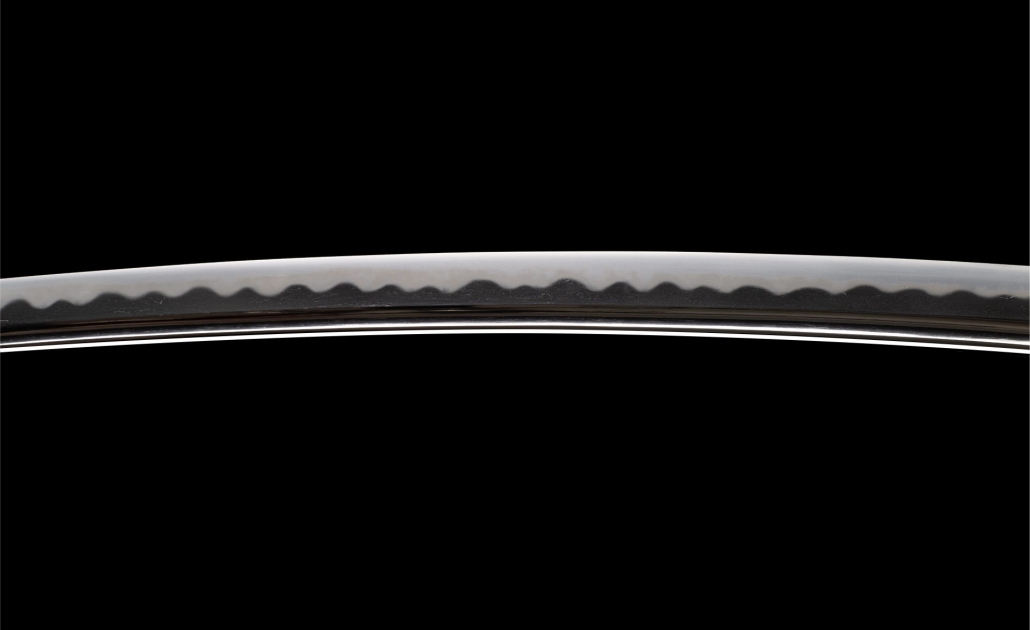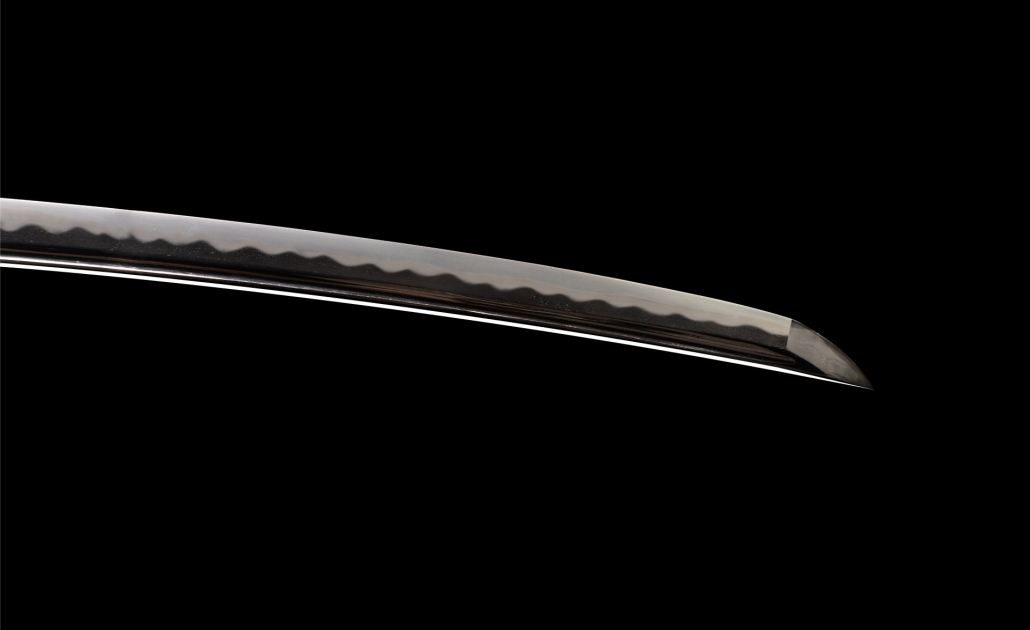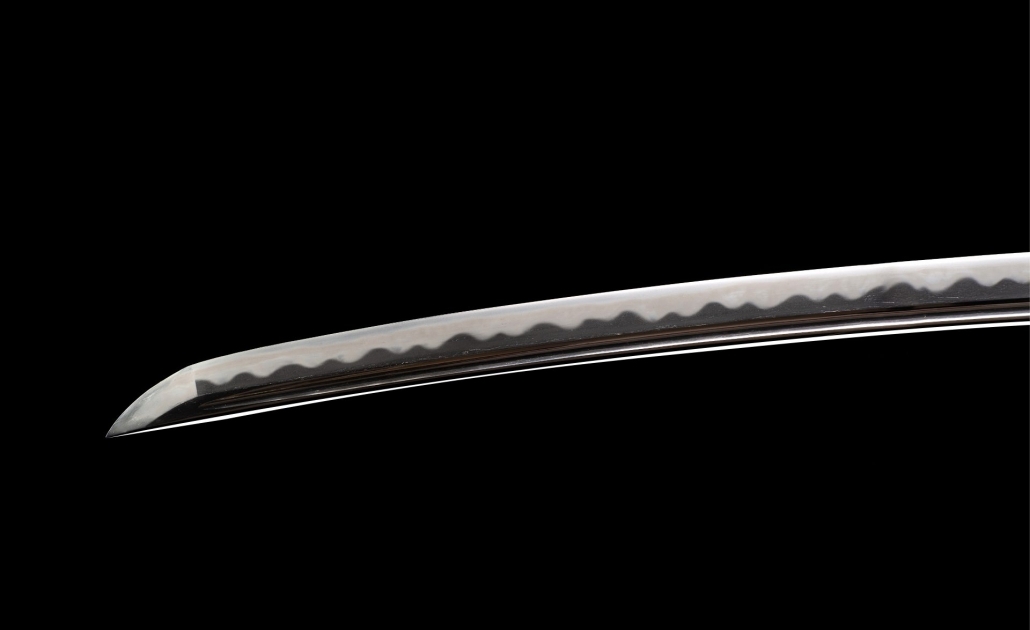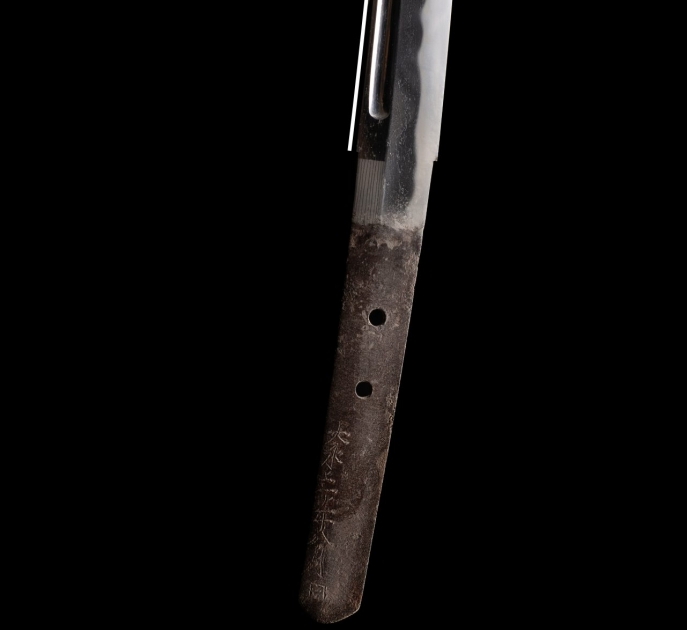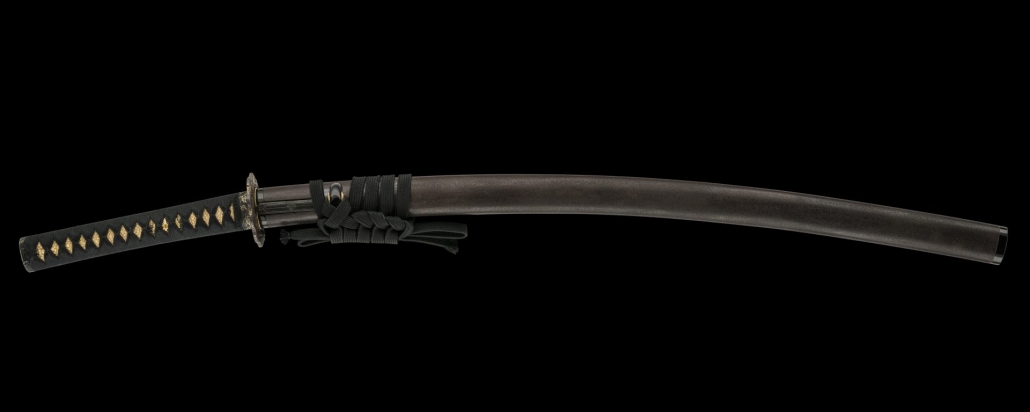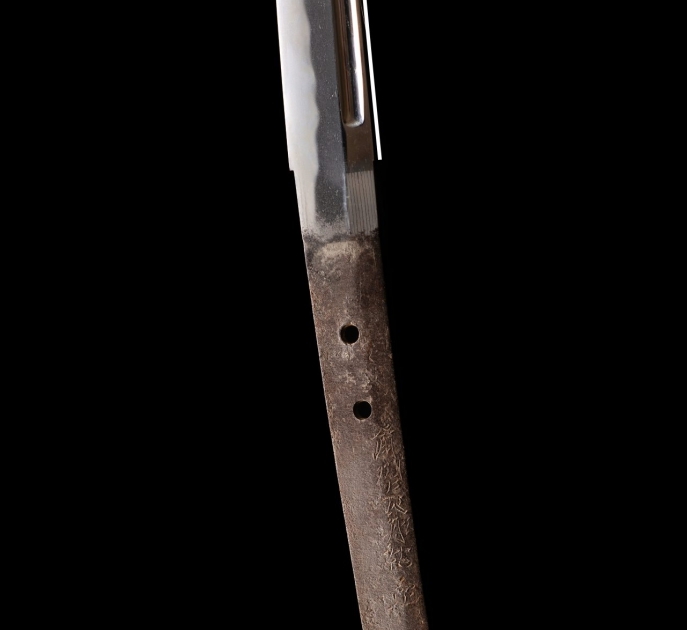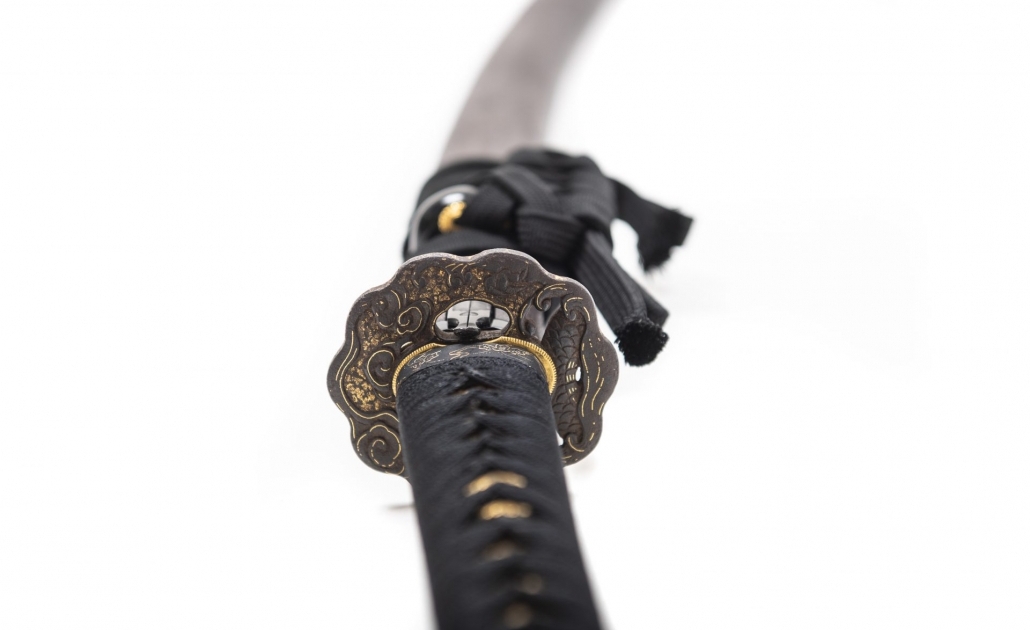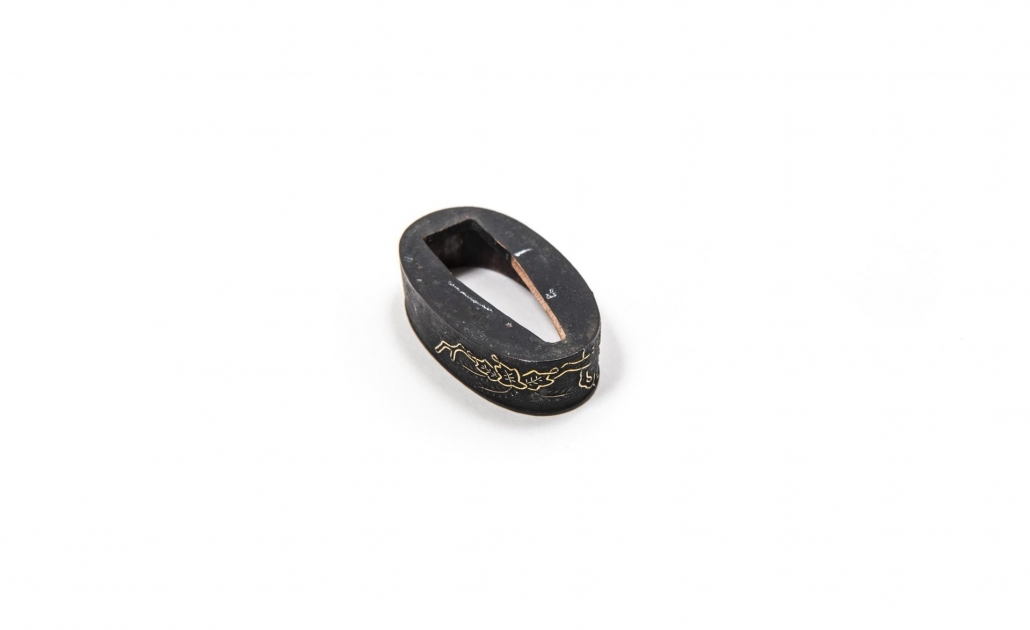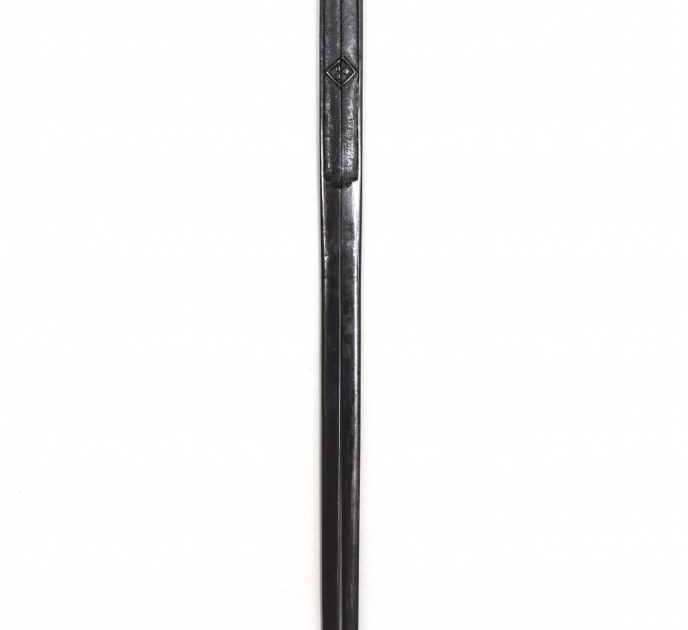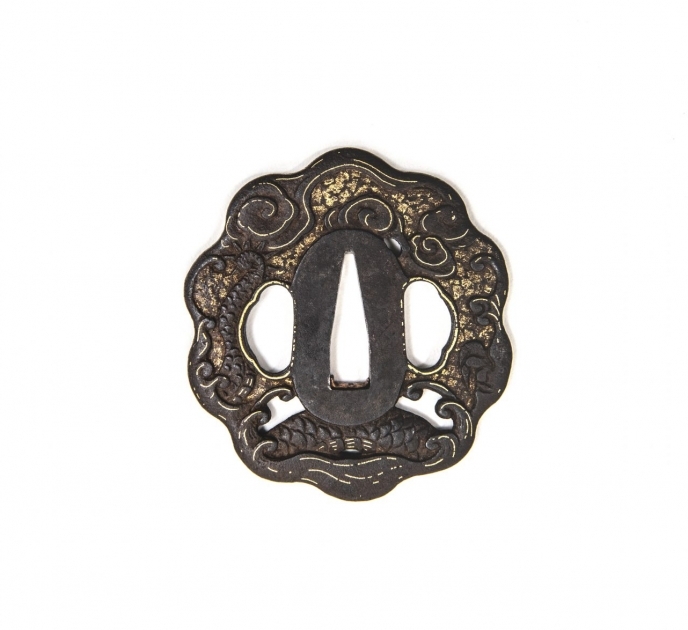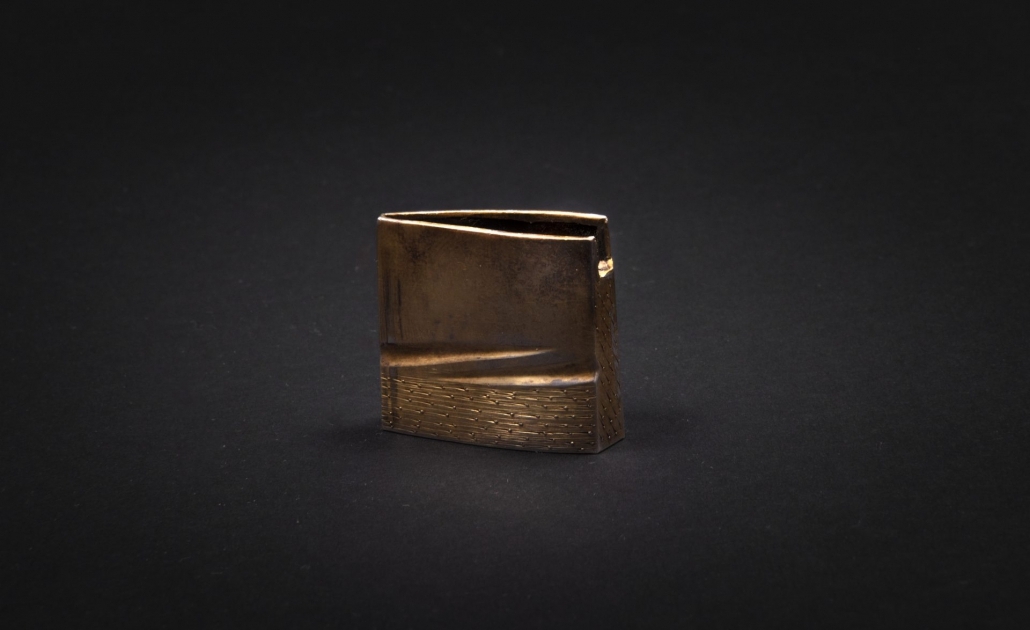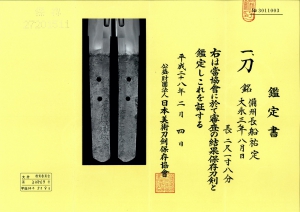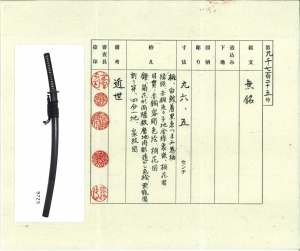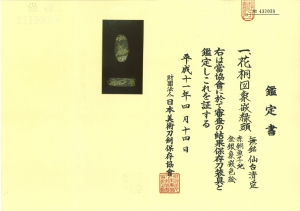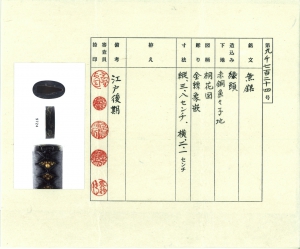Dimensions :
Nagasa : 66.0 cm
Sori : 2.8 cm
Moto-haba : 2.94 cm
Saki-haba : 1.81 cm
Moto-kasane : 0.66 cm
Saki-kasane : 0.41 cm
Nakago : Ubu
Certificate – Origami
Katana – NBTHK Hozon Tōken
“Worthy of preservation”
Koshirae – NTHK-NPO Kanteisho
“Important work”
Fushigashira – NBTHK Hozon
“Worthy of preservation”
Fushigashira – NTHK-NPO Kanteisho
“Important work”
Tsuba – NTHK-NPO Kanteisho
“Important work”
Description :
Katana :
Mei : Bishū Osafune Sukesada ‒ Daiei sannen hachigatsu hi ( 備州⻑船祐定 – 大永三年八月日 )
Sugata : Shinogi-zukuri, saki-zori, iori-mune, chū-kissaki
Kitae : Itame-hada, mokume-hada, ji-nie, midare-utsuri
Hamon : Gunome-chōji-midare (crab claws pattern), nioi-deki, ko-nie, sunagashi, kinsuji, ashi, yō
Boshi : Sansaku, ko-maru with long kaeri
Nakago : Katte-sagari, kurijiri
Koshirae :
Saya : Cha ishimeji-nuri (brown structured lacquer saya with stone ground finish)
Tsuba : Iron, kikkagata, nikubori-sukashi, iroe, cloud dragon motif, signed Jakushi (若芝)
Menuki : Shakudō, katachibori carvings, iroe colors, Paulownia motif
Fushigashira : Shakudō, nanako, Paulownia motif, attributed to Sendai Kiyosada
Wari-kōgai : Shibuichi, clan crest motif
Swordsmith and school :
Many smiths have used the name Sukesada (祐定) throughout the history of the Japanese swordsmithing, most of them were in Bizen and contributed to the development of several schools in this province. Among these was the Sue-Bizen tradition, which was active from the middle to the end of the Muromachi period and whose origin goes back to several branches of the Osafune main school created in the 13th century.
Unfortunately, the incessant conflicts that ravaged Japan during the era of the warring provinces (1467-1568) forced many swordsmiths of Sue-Bizen and Sue-Seki to deal with an important demand for swords. This situation contributed to a mass production of inferior quality swords, which led to the decline of the great forge traditions in Bizen and Mino provinces.

